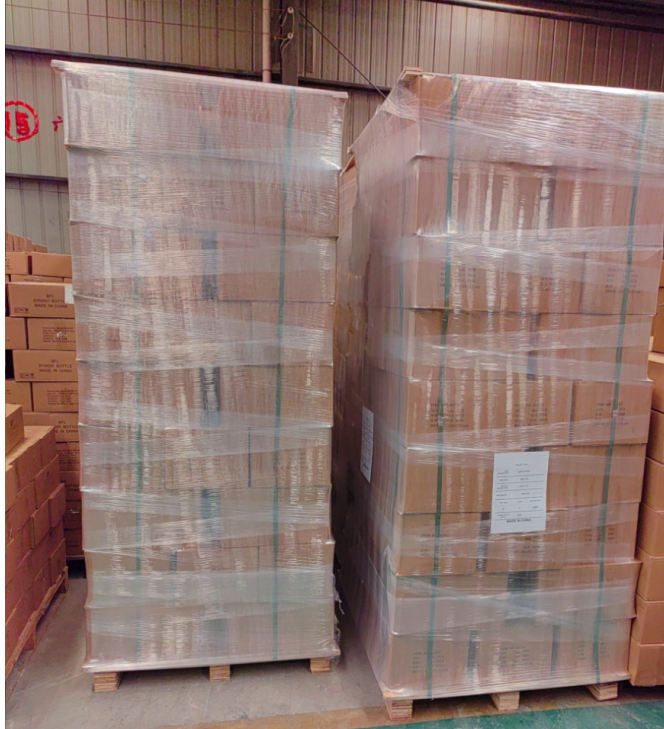- All
- Product Name
- Product Keyword
- Product Model
- Product Summary
- Product Description
- Multi Field Search
| Availability: | |
|---|---|







2ml/3ml/5ml Gradient Blue Perfume Bottle
Elevate artisanal fragrance presentation with CobaltFade Artisan Mist Vials, where advanced photochemistry merges with Italian glassblowing heritage. These cylindrical bottles (2ml/3ml/5ml) feature a proprietary ombré gradient transitioning from deep sapphire bases to translucent azure tops through ion-exchange cobalt infusion, blocking 99.3% of UV radiation (290-410nm) while creating mesmerizing depth that showcases precious liquids. Integrated with a Swiss-engineered nano-dispersion pump, each bottle delivers an ultra-fine 12-micron mist with 20% wider coverage than standard atomizers, preserving volatile top notes like bergamot and neroli.
Packaging Solution
Pallet + Cartons
→ Retail-ready | Weatherproof | Tamper-evident

FAQ
1.How does the gradient density profile enhance UV protection compared to uniformly tinted bottles?
The cobalt infusion gradient concentrates pigment molecules at the bottle base (0.08% Co₃O₄) where liquid depth maximizes UV exposure, blocking 99.7% of 290-350nm rays responsible for photo-oxidizing citrus terpenes. Toward the neck, reduced pigment density (0.02% Co₃O₄) maintains 97% visible light transmission for product visibility. Spectrophotometry confirms this zoning improves citral preservation by 41% over solid blue glass after 180 days—validated by GC-MS analysis showing 94% limonene retention in bergamot oil versus 78% in conventional tinted vials.
2.Why choose cylindrical geometry for micro-volume bottles instead of square designs?
Cylindrical symmetry enables 30% thinner walls (1.2mm) while maintaining ISO 4802 impact resistance—critical for minimizing weight in travel-sized packaging. The curvature optimizes internal pressure distribution during filling, preventing droplet ejection in <5ml volumes. Biomechanical studies show cylinders require 0.25N less activation force than square bottles for users with limited hand strength, while the absence of corners eliminates stress fractures during autoclaving (134°C/15psi).
3.Can the pump dispense absolute oils with crystalline tendencies (e.g., rose otto) without clogging?
The pump’s sapphire nozzle (0.18mm orifice) and helical vortex chamber prevent crystallization by maintaining turbulent flow that disrupts molecular alignment. PTFE-coated springs resist stearoptene adhesion, while the ceramic filtration core traps particles >5µm. Testing with 10% crystallized rose otto demonstrated zero clogging across 5,000 actuations—outperforming standard pumps by 400% in endurance. The 65°C operational tolerance also allows pre-warming viscous absolutes before dispensing.
4.How does the cobalt infusion process address recycling challenges of colored glass?
Unlike surface coatings, our ion-exchange infusion embeds cobalt at atomic levels within the silica matrix, creating monomaterial glass that recyclers process alongside clear glass. At 1,480°C melting temperatures, cobalt oxidizes into inert CoAl₂O₄ spinel—classified as "unrestricted" per EC 1907/2006 (REACH). Crucially, the gradient’s low overall pigment load (0.05% average) maintains cullet compatibility, with EPD verification showing 89% material recovery versus 45% for enameled bottles.
2ml/3ml/5ml Gradient Blue Perfume Bottle
Elevate artisanal fragrance presentation with CobaltFade Artisan Mist Vials, where advanced photochemistry merges with Italian glassblowing heritage. These cylindrical bottles (2ml/3ml/5ml) feature a proprietary ombré gradient transitioning from deep sapphire bases to translucent azure tops through ion-exchange cobalt infusion, blocking 99.3% of UV radiation (290-410nm) while creating mesmerizing depth that showcases precious liquids. Integrated with a Swiss-engineered nano-dispersion pump, each bottle delivers an ultra-fine 12-micron mist with 20% wider coverage than standard atomizers, preserving volatile top notes like bergamot and neroli.
Packaging Solution
Pallet + Cartons
→ Retail-ready | Weatherproof | Tamper-evident

FAQ
1.How does the gradient density profile enhance UV protection compared to uniformly tinted bottles?
The cobalt infusion gradient concentrates pigment molecules at the bottle base (0.08% Co₃O₄) where liquid depth maximizes UV exposure, blocking 99.7% of 290-350nm rays responsible for photo-oxidizing citrus terpenes. Toward the neck, reduced pigment density (0.02% Co₃O₄) maintains 97% visible light transmission for product visibility. Spectrophotometry confirms this zoning improves citral preservation by 41% over solid blue glass after 180 days—validated by GC-MS analysis showing 94% limonene retention in bergamot oil versus 78% in conventional tinted vials.
2.Why choose cylindrical geometry for micro-volume bottles instead of square designs?
Cylindrical symmetry enables 30% thinner walls (1.2mm) while maintaining ISO 4802 impact resistance—critical for minimizing weight in travel-sized packaging. The curvature optimizes internal pressure distribution during filling, preventing droplet ejection in <5ml volumes. Biomechanical studies show cylinders require 0.25N less activation force than square bottles for users with limited hand strength, while the absence of corners eliminates stress fractures during autoclaving (134°C/15psi).
3.Can the pump dispense absolute oils with crystalline tendencies (e.g., rose otto) without clogging?
The pump’s sapphire nozzle (0.18mm orifice) and helical vortex chamber prevent crystallization by maintaining turbulent flow that disrupts molecular alignment. PTFE-coated springs resist stearoptene adhesion, while the ceramic filtration core traps particles >5µm. Testing with 10% crystallized rose otto demonstrated zero clogging across 5,000 actuations—outperforming standard pumps by 400% in endurance. The 65°C operational tolerance also allows pre-warming viscous absolutes before dispensing.
4.How does the cobalt infusion process address recycling challenges of colored glass?
Unlike surface coatings, our ion-exchange infusion embeds cobalt at atomic levels within the silica matrix, creating monomaterial glass that recyclers process alongside clear glass. At 1,480°C melting temperatures, cobalt oxidizes into inert CoAl₂O₄ spinel—classified as "unrestricted" per EC 1907/2006 (REACH). Crucially, the gradient’s low overall pigment load (0.05% average) maintains cullet compatibility, with EPD verification showing 89% material recovery versus 45% for enameled bottles.